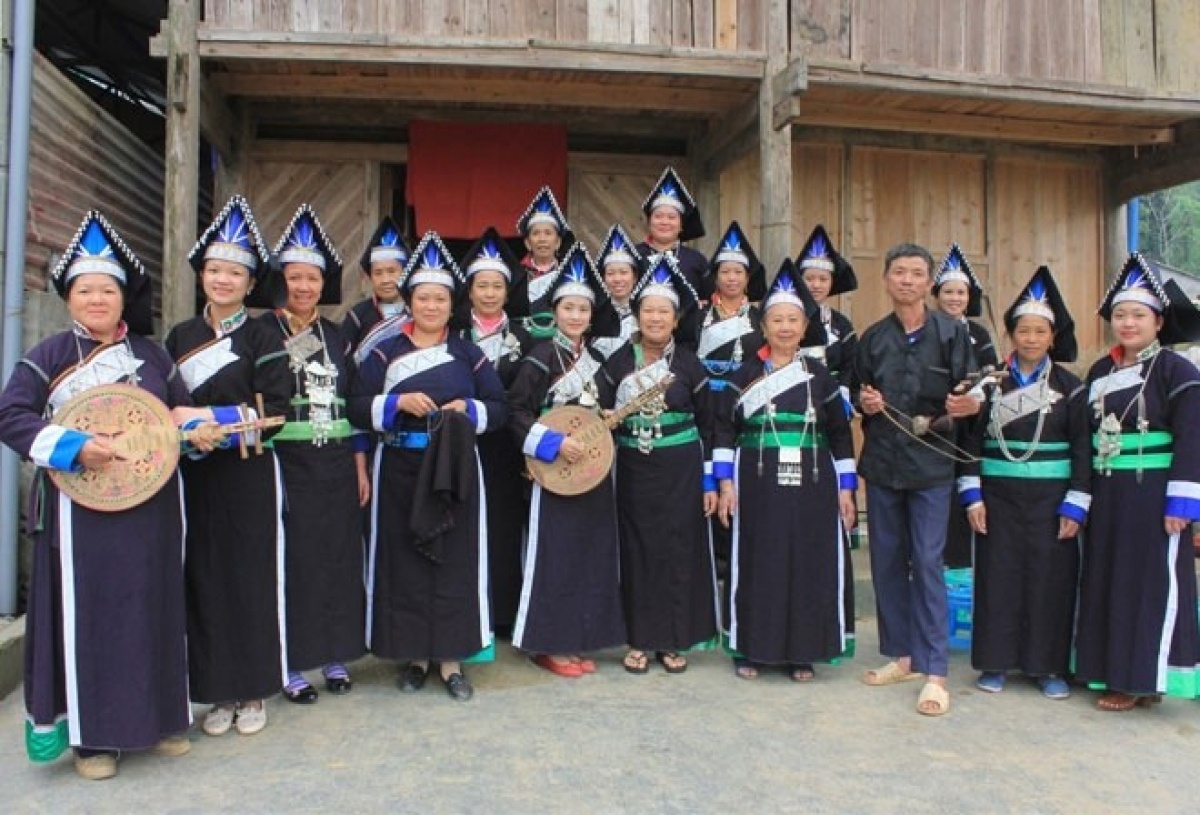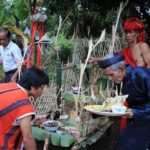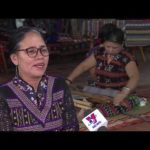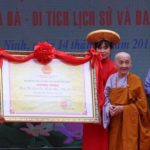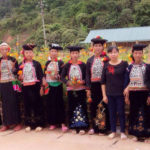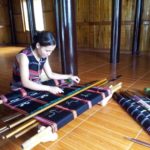Pa Di is a branch of the Tay ethnic group in the northern province of Lao Cai. There are about 2,000 Pa Di people living mainly in the high mountain communes of Muong Khuong district.
Clothes worn by Pa Di women are different from other ethnic groups with their colorful patterns that are closely associated with their habitat of forests and mountains.
A prominent accessory worn by the Pa Di is the woman’s hat. It’s said that in the past, Pa Di family members used to live together in a big house. But once the family got bigger and bigger, they had to separate to live in different houses. In order to remember their roots, clan, and parents, Pa Di people wore a hat, representing the house’s roof.
Po Xin Phuc of Muong Khuong district, said, “The hat represents the roof of a cozy house. It’s a unique feature of our group.”
The hat is woven from flax by Pa Di women. They coat fabric with bees wax and fold it into a hat in the shape of a roof.
The circle band around the head is decorated with silver beads, symbolizing corn, rice, and prosperity. The back side of the hat has a rectangular silver plate carved with images of trees and birds.
Da Pi women weave fabric and dye it with indigo, green, and black. Their shirt is short and buttoned on the right. Small silver buttons are sewn close to each other make a diagonal line from the collar to the waist.
Women wear an ankle-length skirt, which is covered with an apron of the same color. The apron is bordered with a white line, matching with the white patterns on the sleeves.
Po Xin Phuc talks about her traditional clothes, which she wears on special occasions, “I’m proud and happy to wear our traditional clothes, which were carefully handmade by our grandmothers and mothers. It takes a lot of time to make a set of clothes.”
To make colorful patterns and motifs for the clothes, Pa Di women creatively apply embroidery and fabric grafting techniques to create a visual effect as if the patterns are always changing.
Artisan Po Zin Chin said, “The costumes should have different colors such as black, gray, yellow, and green. If it’s not colorful, it’s not Pa Di clothes.”
In the past, traditional clothes were also the dowry for a girl when she married. Now they only wear traditional clothes on special occasions and ceremonies. In 2020 the Ministry of Culture, Sports, and Tourism recognized the Pa Di clothing decoration as a national intangible cultural heritage.
Ta Oi women keep traditional brocade weaving alive
Zeng weaving (a kind of brocade) is a standout craft of Ta Oi ethnic minority community in A Luoi mountainous district, the central province of Thua Thien-Hue province. The craft has been preserved through many generations with women playing a significant role in teaching their daughters to weave “Zeng” patterns.
Ta Oi ethnic weaving recognised as national intangible cultural heritage
NDO – The central province of Thua Thien – Hue on January 16 received a certificate recognising the “Zeng” weaving in A Luoi district as part of the national intangible cultural heritage, the second of its kind in the locality.

